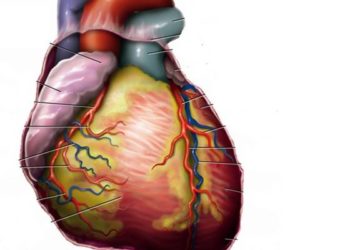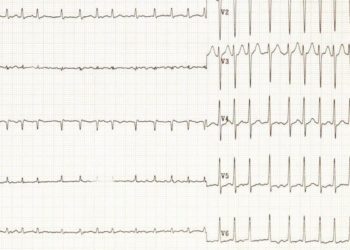No difference between three methods of catheter ablation for persistent atrial fibrillation [STAR AF II]
1. This study compared three different methods of catheter ablation to manage persistent atrial fibrillation: pulmonary-vein isolation alone, isolation with ablation of complex fractionated electrograms, and isolation with linear ablation.
2. There were no significant differences between the three groups in the rates of freedom from atrial fibrillation episodes after a single ablation procedure.
Evidence Rating Level: 1 (Excellent)
Study Rundown: In patients with paroxysmal atrial fibrillation, percutaneous catheter ablation has been found to be an effective treatment, especially in individuals who are not well managed using antiarrhythmic drugs. Catheter ablation is more challenging in individuals with persistent atrial fibrillation and has not been found to be as effective. A procedure known as substrate modification (i.e., by creating linear lesions in the left atrium, or by focal ablation of complex fractionated electrograms) is often performed in addition to pulmonary-vein isolation in order to improve outcomes in these patients. There is limited evidence from randomized trials comparing the efficacy of different methods of ablation.
The Substrate and Trigger Ablation for Reduction of Atrial Fibrillation Trial Part II (STAR AF II) sought to compare three different methods of ablating for persistent atrial fibrillation: 1) pulmonary-vein isolation alone, 2) pulmonary-vein isolation with ablation of complex fractionated electrograms, and 3) pulmonary-vein isolation with linear ablation. In summary, there were no significant differences between the groups with regards to freedom from atrial fibrillation episodes lasting >30 seconds after a single ablation procedure. A weakness of the study was the lack of a group receiving isolation with ablation of electrograms and linear ablation, which has been shown to be superior to either one or two alone.
Click to read the study, published today in NEJM
Relevant Reading: Is the elimination of triggers sufficient? Current controversies in catheter ablation of persistent atrial fibrillation
In-Depth [randomized controlled trial]: A total of 589 patients were enrolled from 48 experienced centers in 12 countries. Patients were eligible if they were ≥18 years of age, had symptomatic persistent atrial fibrillation refractory to at least 1 antiarrhythmic drug, and had never previously had ablation. Patients were excluded if they had paroxysmal atrial fibrillation, sustained atrial fibrillation >3 years, and left atrial diameter ≥60 mm. Enrolled patients were assigned randomly in a 1:4:4 ratio to 1) pulmonary-vein isolation alone, 2) pulmonary-vein isolation with ablation of complex fractionated electrograms (i.e., isolation plus electrograms), and 3) pulmonary-vein isolation with linear ablation (i.e., isolation plus lines). Clinical evaluation, 12-lead electrocardiograms, and 24-hour Holter monitors were performed at baseline, 3, 6, 9, 12, and 18 months after receiving ablation. The primary outcome was freedom from atrial fibrillation lasting >30 seconds and occurring after a single ablation procedure with or without antiarrhythmic medications.
A total of 90% of patients completed the 18-month follow-up. There were no significant differences between the three groups in the rate of repeat ablation (p = 0.10). The rates of the primary outcome were not significantly difference between the three groups (59% for isolation-alone, 49% for isolation plus electrograms, 46% for isolation plus lines; p = 0.15). The most common adverse events related to the procedure were sedation-related complications, pseudoaneurysm at the access site, and hematoma at the access site.
Image: PD
©2015 2 Minute Medicine, Inc. All rights reserved. No works may be reproduced without expressed written consent from 2 Minute Medicine, Inc. Inquire about licensing here. No article should be construed as medical advice and is not intended as such by the authors or by 2 Minute Medicine, Inc.






